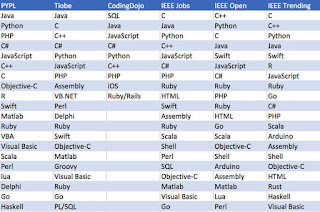The first thing that comes to our mind for the term programming language is C. It is a decade old general-purpose high-level programming language which has defied all norms of popularity. The language has been given the name C because it succeeds another language called B.
is one of the most popular computer programming languages which has existed since the last 44 years. It was created by the famous American programmer Dennis Ritchie – with the help of Ken Thompson – while working at Bell Labs. Most of us have this curiosity that why is the programming language named after a single alphabet. And why it is C, not any other letter. Anyways, we would have questioned the name of the programming language even if a different letter was used. So, let’s focus on the story instead.
The naming of C doesn’t involve any crunchy fiction story, like in the case the Linux Penguin Tux. It is said Linus Torvalds, the creator of Linux, contracted penguinitis after a man-eating penguin running at 100-miles per hour attacked him.
Because C comes after B
The reason why the language was named “C” by its creator was that it came after B language. Back then, Bell Labs already had a programming language called “B” at their disposal. The B language, a high-level language created by Thompson, was itself an implementation of the programming language BCPL designed by Martin Richards of Cambridge University.
The Unix operating system was originally created at Bell Labs by Ken Thompson, Dennis Ritchie, and others. It was implemented on the PDP-7 (manufactured by Digital Equipment Corporation in 1965) computer using the assembly language. Later, Unix was ported to PDP-11 using assembly language but the developers thought about rewriting it using B language.
The B language fell short of abilities to take benefit of the features offered by the newer member of the PDP series, the PDP-11. That’s when Dennis Ritchie started working on a new high-level programming language taking clues from B language. C had a great influence on the Unix operating system. In fact, most of the Unix system including a big part of its kernel is now available in C language.
C has been improved from time to time since its initial release. That’s the reason it’s still a part of the curriculum in many schools around the world and it is the 2nd popular programming language. The language has been an inspiration to many other programming languages like C++, C#, Java, PHP, etc.
If you have something to add, tell us in the comments below.













